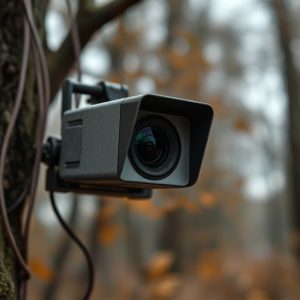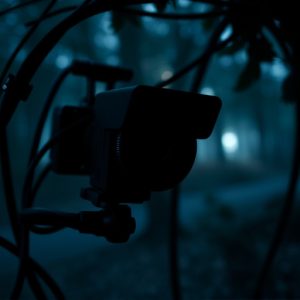Unmasking Hidden Eyes: Spy Camera Lens Detection & Nanny Cam Placement Tips for Your Home
In today's digital era, smartphone apps enable homeowners to detect hidden spy cameras (nanny c…….
In today's digital era, smartphone apps enable homeowners to detect hidden spy cameras (nanny cams) embedded in everyday objects, enhancing home security and privacy protection. Nanny cameras come in various types, offering discreet monitoring through strategic placement near entryways or common areas, while respecting privacy laws. Advanced apps utilize thermal imaging and image analysis to identify suspicious lens patterns or heat signatures. Discreet camera positioning, lens concealment, transparent communication, and regular protocol updates ensure safe home surveillance, balancing security needs with ethical standards and legal compliance regarding spy cameras.
Uncover the world of hidden spy cameras with our comprehensive guide on detecting and navigating their presence in your home. We explore effective techniques, from understanding advanced phone technologies for lens detection to identifying common types of nanny cameras and their unique features. Learn ethical and legal Nanny Cam Placement Tips for ensuring peace of mind while respecting privacy rights in your own space.
- Understanding Spy Camera Lens Detection on Your Phone
- Common Types of Nanny Cameras and Their Features
- Identifying Hidden Cameras: Techniques and Apps
- Best Practices for Safe and Ethical Nanny Cam Placement
- Legal Considerations and Privacy Rights Regarding Spy Cameras
Understanding Spy Camera Lens Detection on Your Phone
In today’s digital age, with advancements in technology, spy camera lens detection using your phone has become an essential tool for enhancing home security. This method allows you to uncover hidden cameras, often referred to as nanny cams, which can be strategically placed in various locations of your home by intruders or unauthorized individuals. By utilizing specialized apps and your phone’s camera, you can actively scan for these lenses and ensure a safer environment.
Understanding how these spy cameras operate is crucial when it comes to effective detection. Many hidden cameras are designed with tiny, nearly invisible lenses that can be embedded in everyday objects like clocks, smoke detectors, or even decor items. These lenses capture video or images remotely, often transmitted wirelessly to a monitoring device. With the right app, your phone’s camera can mimic these lens functions, allowing you to detect any suspicious devices by analyzing the patterns and reflections captured on your screen. This simple yet powerful technique empowers homeowners with Nanny Cam Placement Tips, enabling them to proactively protect their privacy and security.
Common Types of Nanny Cameras and Their Features
Nanny cameras, also known as hidden cameras or surveillance cameras, come in various types and designs tailored for different purposes. Among the common types used for home security and nanny care are:
1. Miniature Cameras: These compact cameras are designed to blend seamlessly into their surroundings. They can be easily concealed behind objects like pictures frames, plants, or even wall sockets. Miniature cameras offer high-resolution video and often include night vision capabilities, making them ideal for discreetly monitoring activities in the home.
2. Wi-Fi Nanny Cameras: These devices connect to your home’s Wi-Fi network, allowing real-time remote monitoring via a smartphone app. They provide two-way audio, motion detection alerts, and cloud storage options. Wi-Fi nanny cameras are convenient for parents who want to keep an eye on their children or employers who need to monitor the activities of their nanny from afar.
When placing a nanny camera in the home, consider strategic locations that offer optimal visibility while maintaining privacy. Common placement tips include positioning the camera near entryways, staircases, or common areas where activity is likely to occur. Ensure you follow local laws and respect the privacy of individuals being monitored.
Identifying Hidden Cameras: Techniques and Apps
Identifying hidden cameras, often referred to as Nanny Cam Placement Tips Home, has become a necessary skill in today’s digital age. While many people use security cameras for peace of mind, there are individuals who employ them for malicious purposes. With the advancement of technology, these tiny devices can be almost invisible, fitting discreetly into everyday objects like picture frames or smoke detectors. However, that doesn’t mean they’re undetectable.
Fortunately, smartphone apps have emerged as powerful tools in this scenario. Dedicated apps use various techniques, including thermal imaging and image analysis algorithms, to scan environments for suspicious lens patterns or heat signatures indicative of hidden cameras. These apps allow users to carefully inspect their spaces, ensuring privacy and security. Some even offer real-time alerts, warning you immediately if a potential spy camera is detected, making it easier than ever to keep an eye out for these covert devices.
Best Practices for Safe and Ethical Nanny Cam Placement
When setting up a nanny cam in your home, prioritizing safety and ethical considerations is paramount. Start by choosing discreet locations that offer clear views without being too obvious. Avoid placing cameras near windows or entry points, as this could alert potential intruders. Opt for corners or less frequented areas within each room to maintain privacy. Additionally, ensure the camera lens is not easily visible; consider purchasing a fake power outlet or adapter that can conceal the lens.
Remember to inform all household members and guests about the presence of nanny cams, emphasizing their purpose for safety and peace of mind. Respecting privacy is crucial, so only record when necessary and store footage securely. Regularly review and update your camera placement and security protocols to maintain a safe home environment while adhering to ethical guidelines.
Legal Considerations and Privacy Rights Regarding Spy Cameras
In many regions, the use of spy cameras, especially those disguised as everyday items like clocks or light bulbs, is subject to strict legal oversight due to privacy concerns. The installation and operation of such devices can trigger laws related to surveillance and consent, particularly in residential settings. For instance, many countries have regulations that require explicit permission from all residents of a home before installing hidden cameras, especially in common areas or personal spaces like bedrooms.
Privacy rights are a significant factor when it comes to nanny cam placement tips for homes. While parents or caregivers may want to ensure the safety and well-being of their children or employees, they must balance these needs against the right to privacy. It’s crucial to position cameras in open areas where there is no reasonable expectation of privacy, such as living rooms or kitchens, rather than in private spaces like bathrooms or bedrooms. Always being transparent about the camera’s presence can help maintain trust and ensure legal compliance.
In the quest to ensure safety and maintain privacy, understanding spy camera lens detection on your phone is a powerful tool. By familiarizing yourself with various types of nanny cameras and their features, you can employ effective techniques and apps for hidden camera identification. When setting up nanny cam placement in your home, adhering to best practices and ethical guidelines is paramount. Additionally, being aware of legal considerations and privacy rights related to spy cameras ensures a balanced approach to protecting your loved ones and safeguarding personal spaces.


